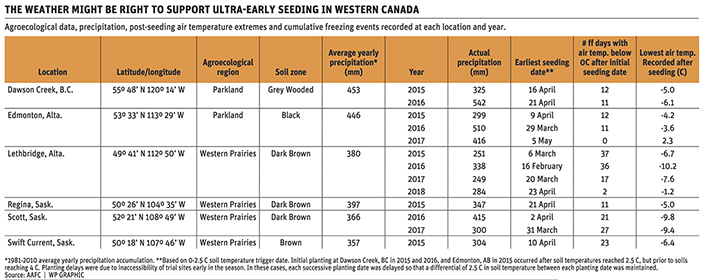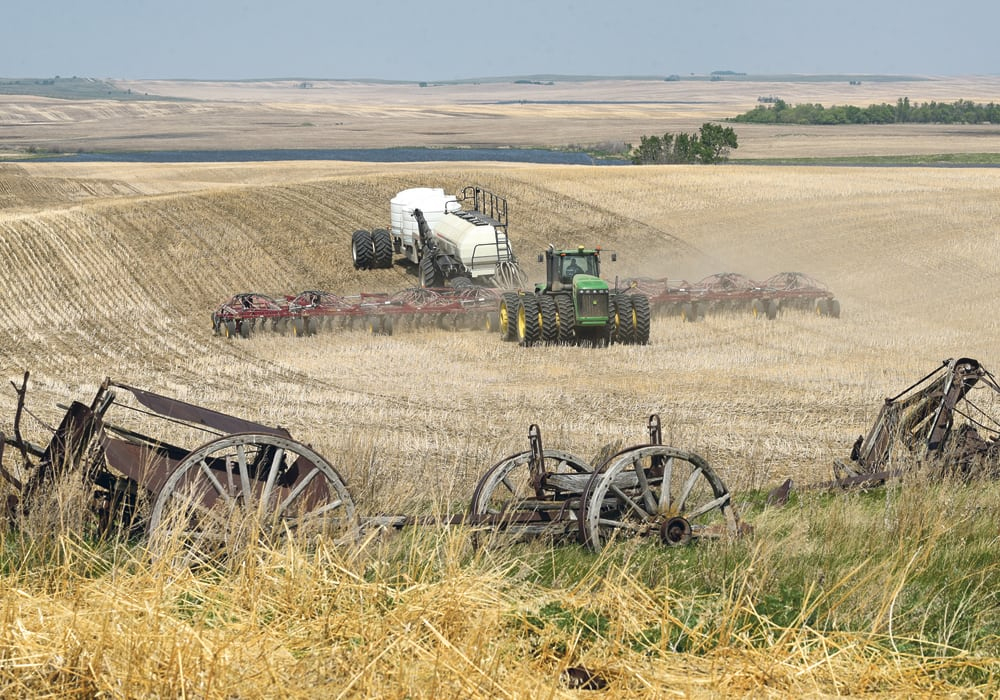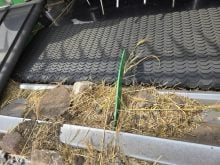Spring can be a crapshoot when it comes to predicting the often-turbulent weather on the Prairies. It can range from scorching hot to bitterly cold.
Yet farmers appear to start seeding at the same time no matter what.
Now, a researcher with Agriculture Canada said it’s time to shake off the shackles of set seeding dates and start seeding wheat as soon as the soil is soft enough to get implements into the ground — even in February.
While climate change and rising global temperatures might be seen as the impetus to ultra-early seeding, researcher Brian Beres said the motivation to try it out stems from a trip to Montana from Lethbridge in March nearly a decade ago.
“There was enough guys out there at the end of March prepping fields that got me thinking, maybe these guys are on to something,” said Beres.
Montana farmers were seeding more fallow wheat and tilling was more common than north of the border where there was also more diversified crops but Beres said the Americans seemed to have tossed the seeding calendar out the window.
“This whole idea of sticking to an arbitrary calendar date — you find it in the Farmers’ Almanac. You find it in crop insurance deadlines and you even find it in academic papers,” he said. “My idea was just to abandon all that and simply start planting when the soil says that we can.”
Dates weren’t the only thing Beres tossed. He also believed it unnecessary to have double-digit soil temperatures before seeding.
He said researchers looked for a baseline on what soil temperatures would work, starting at 0 C, with the hypothesis that would be too cold, and progressively seeded into warmer soil by 2 C increments, until they reached 10 C.
Beres said the experiments showed that 2 C soil temperature was the ideal trigger for seeding.
Whether it was the first week of March, third week in April or even as early as mid-February one year, if the soil temperature was between 0 C and 2 C, they seeded.
“It sort of terrified me that we would plant in mid-February or early March because eventually they would come up early and get exposed to some pretty nasty weather,” he said. “The fact is there was some really nasty weather, like 30 days of way below 0 C in Lethbridge the one time.”
However, results showed that at worst, ultra-early seeding protected yields and, in many cases, resulted in higher yields.
“What our advice is now is as soon as it registers 2 C in the top two inches, go plant no matter what time it is,” said Beres. “In fact, you can go at 0 C provided you’re not ripping up big aggregate, depending on your drill.”
Testing at a research farm in Lethbridge is one thing, real world seeding on working farms is another.

Click here to download a larger version of the chart above in PDF format.
Beres said the last few years of doing just that on farms from Swift Current, Sask., to Dawson Creek, B.C., and points between have been consistent in proving that soil temperature is a more important factor than calendar dates.
“We know it won’t work at every site, every year.”
But the feedback from wheat growers who have tried it has been overwhelmingly positive, he said, adding ultra-early seeding provides the best of winter wheat disease resistance while also reaping the moisture benefits found during spring runoff.
Beres said the initial strategy wasn’t focused on climate change mitigation, but that’s where the benefits will likely be felt as warming temperatures hit the Prairies.
Beres said he is hearing from farmers of significantly longer growing seasons that have increased in a single lifetime.
“If you have that in one generation, imagine three generations from now how they will be planting,” he said. “I think they will be planting along the lines of this concept because I think it will create a new foundation.”
















